

Chhattisgarh, located in central India, is a state of breathtaking natural beauty, rich cultural heritage, and significant mineral resources. Carved out of Madhya Pradesh in 2000, it is known for its dense forests, ancient temples, and vibrant tribal communities. The state is home to numerous indigenous communities including the Gond, Baiga, Halba, Kamar, and Maria tribes, each with distinct cultures and traditions. From the capital Raipur to the historic city of Sirpur, and from the Chitrakote Falls to the industrial hub of Bhilai, Chhattisgarh presents a fascinating blend of traditional tribal life and contemporary development. The state's agricultural output, particularly rice production, has earned it the title "Rice Bowl of India," while its mineral wealth contributes significantly to the nation's economy.

Chhattisgarh stands as a testament to the rich historical legacy and cultural heritage of central India. The region's history dates back to ancient times, with references found in ancient texts like the Ramayana and Mahabharata. The name "Chhattisgarh" means "Thirty-Six Forts," reflecting the region's historical division into 36 feudal territories, though the exact origin of the name remains debated among historians.
The region was part of the Dakshina Kosala Kingdom in ancient times and later came under the rule of various dynasties including the Sarabhpurias, Panduvanshis, Somavanshis, Kalachuris, and Marathas. The Haihaiyavansi Kalachuri dynasty, which ruled from the 10th to the 18th century, left a significant architectural legacy including the famous temples of Bhoramdeo and Rajim. The region developed a distinct cultural identity characterized by its language, customs, and artistic traditions.
Chhattisgarh has a rich tradition of tribal culture and folk arts. The Gond tribe, one of the largest tribal communities in India, has a particularly rich cultural heritage with their unique art forms, music, and dance traditions. The region's tribal communities have preserved their distinct identities while contributing to the broader cultural mosaic of Chhattisgarh. The Bastar region, in particular, is known for its unique tribal culture and traditional crafts.
The struggle for a separate Chhattisgarh state gained momentum in the 20th century, with various political and social movements advocating for recognition of the region's distinct identity. Leaders like Pt. Sundarlal Sharma, Thakur Pyarelal Singh, and Dr. Khubchand Baghel played crucial roles in this movement. After decades of effort, Chhattisgarh was finally carved out of Madhya Pradesh as India's 26th state on November 1, 2000.
The cultural legacy of Chhattisgarh is rich and diverse, with strong traditions in music, dance, theater, and crafts. The state is famous for its folk dances like Panthi, Raut Nacha, and Karma, and its unique theatrical form called Pandwani. Traditional crafts include bell metal work, wrought iron work, wood carving, and bamboo work, which have been preserved through generations and continue to be important economic activities.
Today, Chhattisgarh takes immense pride in this heritage of cultural richness and historical significance. The state's formation represents the recognition of its distinct identity within the Indian federation. The values of environmental stewardship, community living, and cultural diversity established by tribal traditions continue to shape Chhattisgarh's identity in the modern era.
The legacy of Chhattisgarh's ancient kingdoms and tribal traditions is not just historical; it continues to inspire contemporary Chhattisgarhi identity. The Chhattisgarhi language, with its rich literary tradition, remains a powerful symbol of cultural pride. The traditional knowledge systems related to agriculture, forest management, and crafts offer valuable resources for sustainable development in the modern context.
Chhattisgarh is known for its remarkable linguistic diversity, reflecting its rich tribal heritage and cultural mosaic. The state's language landscape showcases its unique position as home to numerous indigenous tribal communities with distinct languages alongside Hindi and Chhattisgarhi, creating a fascinating linguistic tapestry that represents the region's cultural richness.
Hindi is the official language of Chhattisgarh and serves as the primary language for administration, education, and inter-community communication. While Hindi serves as the administrative language, the state government has also given recognition to Chhattisgarhi and various tribal languages, reflecting the region's linguistic diversity and cultural inclusivity.
The languages of Chhattisgarh reflect its unique cultural identity as a meeting point of tribal traditions and mainstream influences. While Hindi serves as the administrative language and Chhattisgarhi as the regional lingua franca, the numerous tribal languages showcase the state's incredible diversity. This linguistic richness truly mirrors Chhattisgarh's spirit of cultural harmony and preservation of indigenous identities while embracing broader national integration and development.
Chhattisgarh is a state where tribal festivals, Hindu celebrations, and harvest observances coexist in perfect harmony. The festivals here reflect the state's deep connection with nature, agricultural cycles, and diverse cultural traditions, creating a vibrant tapestry of celebrations throughout the year that showcase Chhattisgarh's unique identity as a land where ancient traditions thrive alongside modern life.
Hareli is the most important agricultural festival of Chhattisgarh, celebrated with great enthusiasm across the state. This festival marks the beginning of the monsoon season and the sowing of crops. Hareli, which means "greenery" in Chhattisgarhi, celebrates the rejuvenation of nature and the hope for a bountiful harvest. The festival reflects the deep connection between the people of Chhattisgarh and their agricultural traditions.
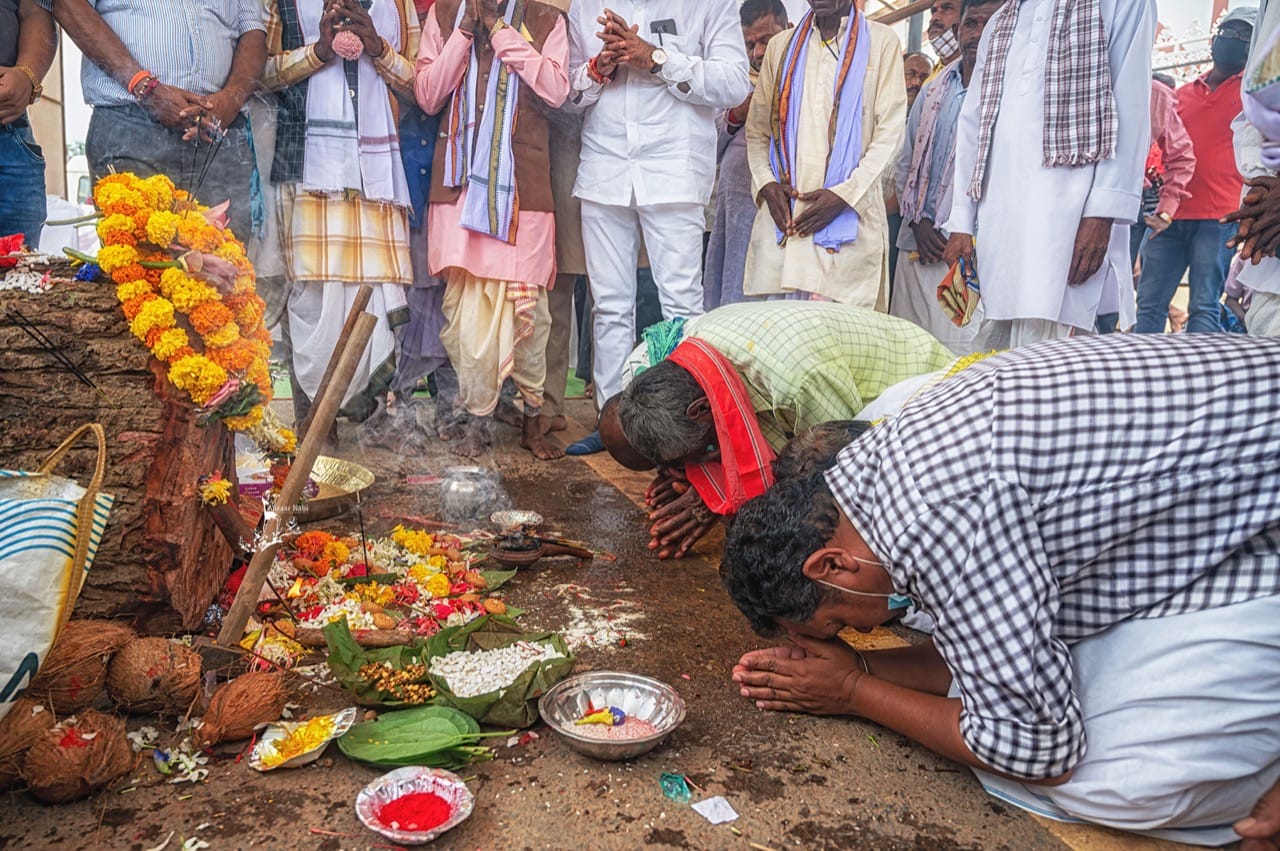
Hareli is not just an agricultural festival but a celebration of Chhattisgarh's deep connection with nature and its farming heritage. It brings together communities in a grand display of cultural pride and environmental consciousness. The festival's unique blend of agricultural significance, nature worship, and cultural expression makes it the true essence of Chhattisgarh's spirit as an agrarian society that honors its roots while embracing the future.
Bastar Dussehra is one of the most unique and spectacular festivals of Chhattisgarh, celebrated with great pomp and show in the Bastar region. Unlike the conventional Dussehra celebrations in other parts of India, Bastar Dussehra has distinct tribal traditions and lasts for 75 days, making it one of the longest festivals in the world. This extraordinary celebration reflects the unique cultural identity of the Bastar region and its tribal communities. The festival begins on the new moon day of Shravan month and continues for 75 days, culminating on the thirteenth day of the bright moon in Ashwin month. According to local belief, the festival started in the 13th century when the Kakatiya king Purushottam Dev went to Jagannath Puri and brought back the idols of Lord Jagannath, Balabhadra, and Subhadra. The unique feature of Bastar Dussehra is that it celebrates Goddess Danteshwari, the presiding deity of Bastar, rather than Lord Rama. The festival involves elaborate rituals, processions, and cultural performances that showcase the rich tribal heritage of the region. The highlight is the grand procession where the idol of Goddess Danteshwari is taken out in a beautifully decorated chariot. The participation of various tribal communities in their traditional attire, with their unique musical instruments and dance forms, creates a mesmerizing spectacle.
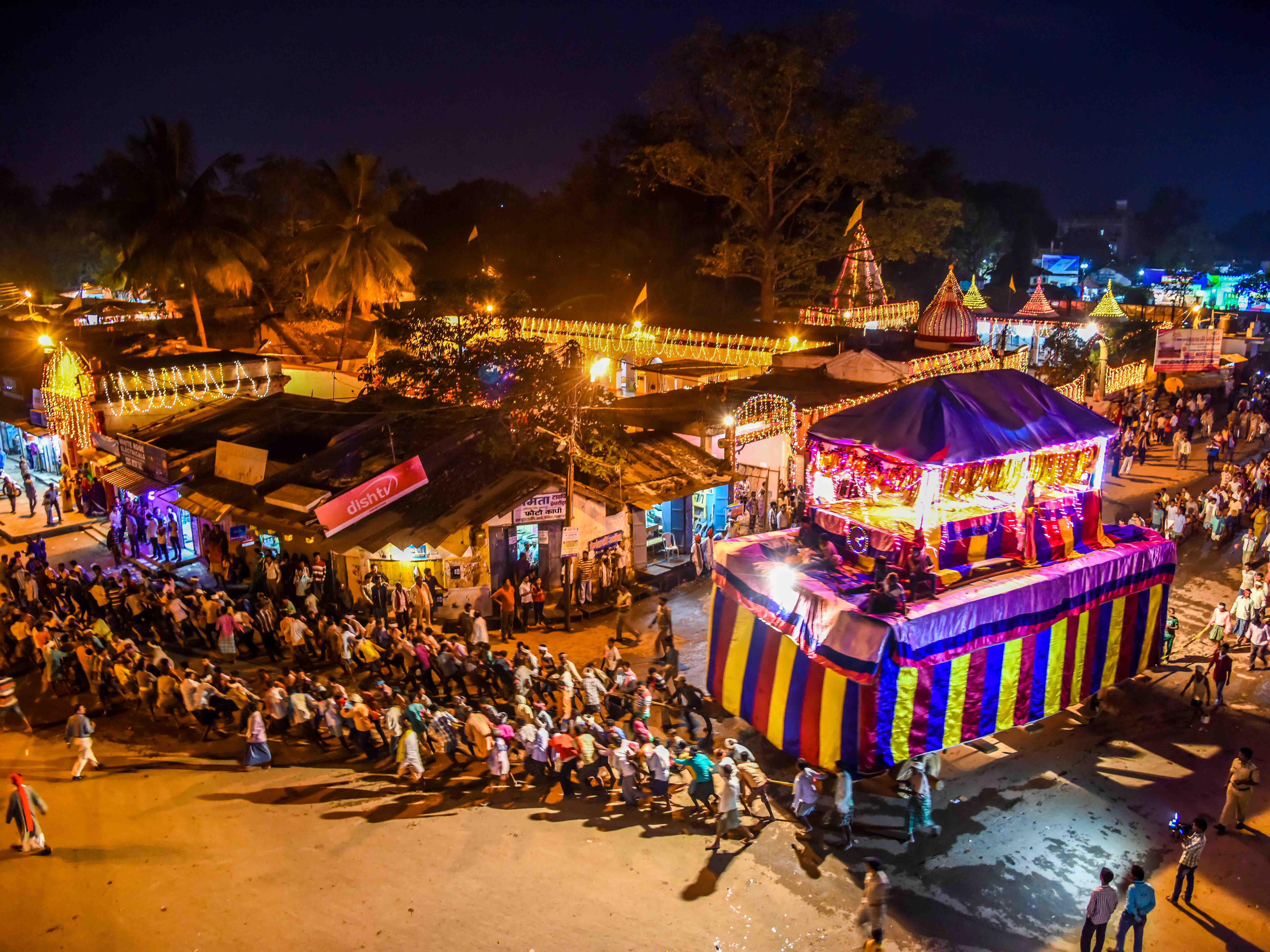
In conclusion, Bastar Dussehra is not just a religious festival but a magnificent display of tribal culture, unity, and devotion. It brings together diverse tribal communities in a celebration that has been preserved for centuries, showcasing the unique cultural identity of Bastar and its people's deep connection with their traditions and deities.
Bastar Dussehra is more than a religious ceremony; it is a living tradition that showcases the unique cultural identity of Chhattisgarh's tribal communities. As one of the longest and most distinctive festivals in India, it represents Chhattisgarh's commitment to preserving its cultural diversity while showcasing it to the world. The festival stands as a testament to the rich tribal heritage that makes Chhattisgarh unique among Indian states.
Pola is a significant festival celebrated by the farming communities of Chhattisgarh, dedicated to bulls who play a crucial role in agriculture. This festival reflects the deep respect and gratitude that farmers have for their bovine companions. Celebrated mainly in rural areas, Pola showcases the intimate relationship between humans and animals in agricultural societies and highlights the importance of cattle in Chhattisgarh's agrarian economy.
Pola in Chhattisgarh is not just an animal festival but a celebration of the symbiotic relationship between humans and nature that characterizes traditional agriculture. From the elaborate decoration of bulls to the community feasts, every aspect reflects Chhattisgarh's identity as an agrarian society that values its cattle and maintains sustainable farming practices that have been perfected over generations.
The festivals of Chhattisgarh showcase its incredible cultural diversity, agricultural heritage, and tribal traditions. From ancient agricultural celebrations like Hareli to unique tribal festivals like Bastar Dussehra, and from cattle worship in Pola to religious gatherings like Rajim Kumbh, every festival reflects the state's spirit of unity in diversity. This harmonious coexistence of different traditions makes Chhattisgarh a unique example of cultural richness in India, where ancient wisdom and modern aspirations blend seamlessly, and where tribal and mainstream traditions create a vibrant cultural mosaic that is distinctly Chhattisgarhi.
Chhattisgarh, though one of India's younger states, boasts urban centers that beautifully blend ancient heritage with modern development. Its cities are not only administrative and economic hubs but also custodians of Chhattisgarh's unique identity, where tribal traditions coexist with contemporary urban life. Each city plays a distinctive role in shaping Chhattisgarh's character and pride, reflecting the state's journey from ancient civilizations to modern statehood.
Raipur, the capital city of Chhattisgarh, serves as the political, administrative, and economic heart of the state. Located in the fertile plains of central Chhattisgarh, Raipur has transformed from a historic town to a bustling metropolitan city. The city beautifully balances its role as a state capital with rapid industrial growth, making it one of central India's most important urban centers and the face of modern Chhattisgarh.
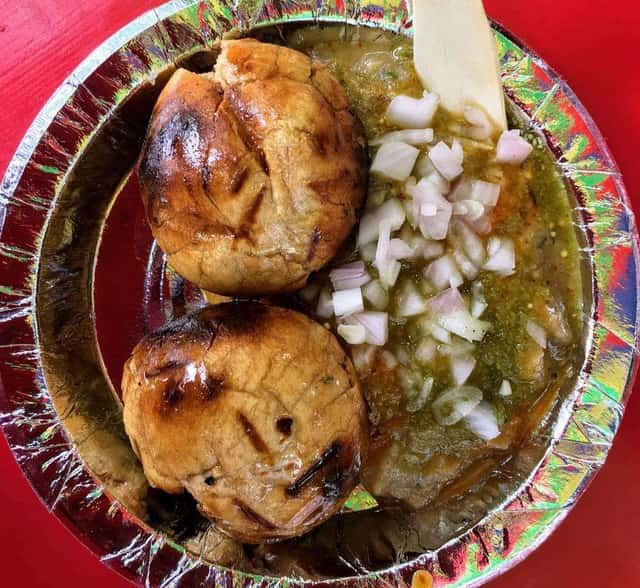

The Mahant Ghasidas Memorial Museum in Raipur is one of the oldest and most important museums in central India, established in 1875 by Mahant Ghasidas, the ruler of Rajnandgaon. This magnificent museum showcases the rich cultural, historical, and anthropological heritage of Chhattisgarh, providing visitors with a comprehensive understanding of the state's diverse traditions and history.
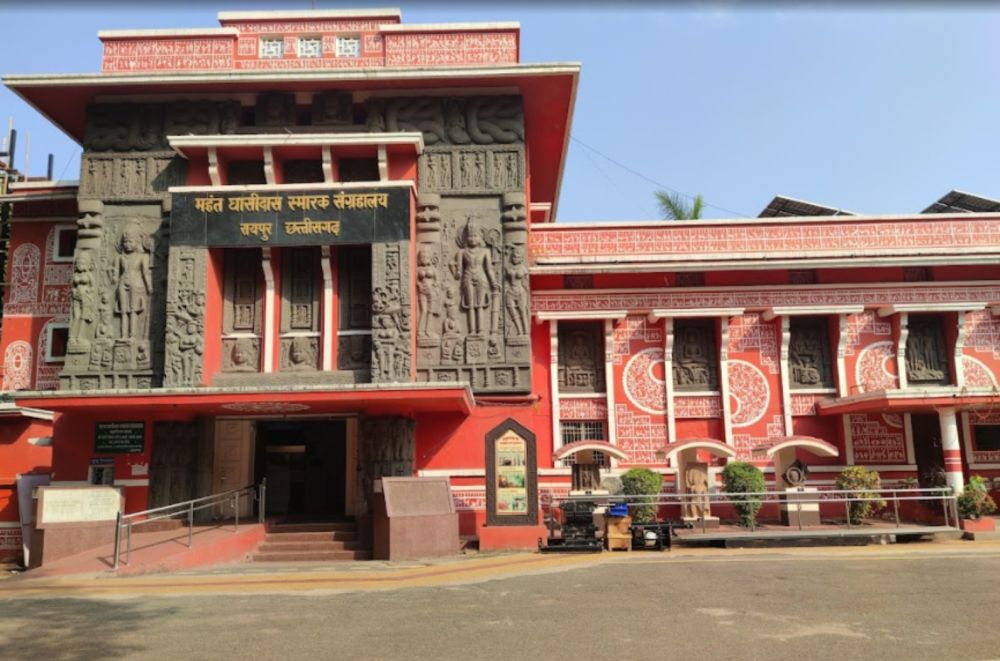
The museum houses an extensive collection of archaeological artifacts, sculptures, inscriptions, coins, weapons, and traditional crafts. The anthropology section displays the lifestyle, customs, and artifacts of Chhattisgarh's various tribal communities, including the Gonds, Baigas, Halbas, and others. The natural history section features specimens of the region's flora and fauna, highlighting Chhattisgarh's rich biodiversity.
The museum building itself is an architectural marvel, combining traditional and colonial styles. The surrounding gardens provide a serene environment for visitors. The museum serves as an important educational resource for students, researchers, and anyone interested in understanding Chhattisgarh's cultural richness and historical depth.
Today, the Mahant Ghasidas Memorial Museum stands as a symbol of Chhattisgarh's commitment to preserving and promoting its cultural heritage. It represents the vision of its founder in creating an institution that would educate future generations about the region's glorious past and diverse cultural traditions.
In conclusion, the Mahant Ghasidas Memorial Museum is much more than a collection of artifacts—it is a living repository of Chhattisgarh's soul, telling the story of the land and its people from ancient times to the present day, and serving as a bridge between the past and future of this vibrant state.
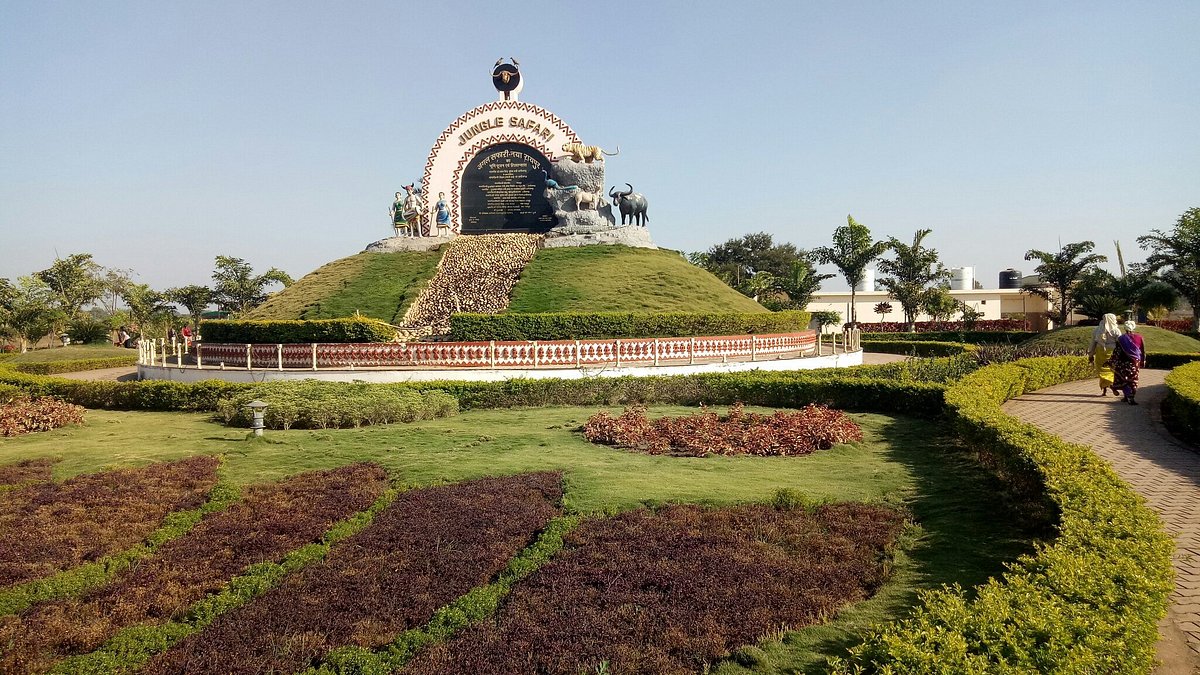
Nandan Van Zoo and Safari in Raipur is one of the largest and most modern zoological parks in central India, offering visitors an opportunity to experience wildlife in naturalistic habitats. Spread over a vast area, this zoo and safari park represents Chhattisgarh's commitment to wildlife conservation, environmental education, and eco-tourism while providing recreational opportunities for city residents and tourists.
The zoo features a wide variety of animals including tigers, leopards, bears, deer, and numerous species of birds and reptiles. The safari section allows visitors to observe animals in more natural settings from the safety of designated vehicles. The park is designed with modern concepts of zoo management that prioritize animal welfare while providing educational and recreational experiences for visitors.
Nandan Van is not just a tourist attraction but also an important center for wildlife conservation and research. The zoo participates in breeding programs for endangered species and conducts research on animal behavior and conservation. Educational programs for school children and visitors help raise awareness about wildlife protection and environmental issues.
The zoo's location on the outskirts of Raipur makes it easily accessible while providing adequate space for the animals. The well-maintained pathways, informative signage, and visitor amenities ensure a comfortable and educational experience for all ages. The park also features a beautiful lake, gardens, and picnic spots that add to its recreational value.
In conclusion, Nandan Van Zoo and Safari is more than just a zoo—it is a testament to Raipur's growth as a modern city that values environmental conservation and quality of life. It represents Chhattisgarh's rich biodiversity and the importance of preserving it for future generations, while providing urban residents with a much-needed connection to nature.

Vivekananda Sarovar, also known as Burha Talab, is a historic lake and popular recreational area in the heart of Raipur. This beautiful water body, surrounded by gardens and walking paths, serves as the lungs of the city and provides a peaceful retreat for residents and visitors alike. The lake has been developed into a comprehensive recreational complex that combines natural beauty with modern amenities.
The lake area features beautifully landscaped gardens, fountains, walking tracks, and seating areas. The main attraction is the musical fountain show that takes place in the evenings, with water dancing to music and colorful lights. The lake also has boating facilities that allow visitors to enjoy the serene waters and the surrounding cityscape from a different perspective.
Vivekananda Sarovar is not just a recreational space but also an important ecological asset for Raipur. The lake helps in groundwater recharge and supports urban biodiversity. The surrounding green space provides habitat for various bird species and helps improve the city's air quality. The lake's historical significance adds to its cultural value, having been part of Raipur's landscape for centuries.
From an urban planning perspective, Vivekananda Sarovar represents the importance of preserving natural spaces within growing cities. It demonstrates how urban development and environmental conservation can coexist, providing both ecological benefits and quality of life improvements for city residents.
In conclusion, Vivekananda Sarovar is not just a lake but a vital urban oasis that enhances Raipur's livability. It represents the city's commitment to creating beautiful public spaces that serve both recreational and environmental purposes, making it a model for urban development that balances growth with quality of life considerations.
The Shaheed Smarak Complex in Raipur is a magnificent memorial dedicated to the freedom fighters and martyrs of Chhattisgarh. This sprawling complex serves as a place of remembrance, education, and inspiration, honoring those who sacrificed their lives for India's independence and the state's development. The complex represents Chhattisgarh's rich history of resistance and its contributions to the nation's freedom struggle.
The centerpiece of the complex is a tall memorial structure surrounded by beautifully maintained gardens. The complex features exhibition halls that display information about the freedom struggle in Chhattisgarh, artifacts from the independence movement, and biographies of local heroes. The architectural design incorporates elements that reflect Chhattisgarh's cultural identity while creating a solemn and respectful atmosphere.
Beyond its role as a memorial, the Shaheed Smarak Complex serves important educational functions. School children and visitors learn about the sacrifices made by freedom fighters from the region. The complex hosts cultural events, patriotic programs, and educational activities that keep the memory of the freedom struggle alive and relevant for new generations.
The complex is also a popular recreational space for Raipur residents, with its beautiful gardens and peaceful environment. It serves as a venue for various public events and gatherings, making it an integral part of the city's cultural and social life.
Today, the Shaheed Smarak Complex stands as a symbol of Chhattisgarh's patriotism and its contributions to India's history. It represents the state's commitment to honoring its heroes and educating future generations about the values of freedom, sacrifice, and national pride.
In conclusion, the Shaheed Smarak Complex is more than just a memorial—it is a living institution that connects Chhattisgarh's past with its present and future. It serves as a constant reminder of the sacrifices that made possible the freedoms enjoyed today, and inspires citizens to contribute to the state's and nation's progress.
MM Fun City in Raipur is one of the largest and most popular amusement parks in central India, offering a wide range of entertainment options for all age groups. This modern recreational facility represents Raipur's growth as an urban center that provides quality leisure and entertainment opportunities to its residents and visitors, reflecting the city's development and modernization.
The amusement park features various rides and attractions including roller coasters, water rides, Ferris wheels, and adventure activities. The water park section is particularly popular during summer months, with slides, wave pools, and other aquatic attractions. The park is designed with safety standards and modern amenities to ensure an enjoyable experience for visitors.
MM Fun City is not just an entertainment venue but also an important social space where families and friends can spend quality time together. The park hosts special events, cultural programs, and festivals that add to its appeal. The availability of food courts, shopping areas, and other facilities makes it a complete entertainment destination.
From an economic perspective, MM Fun City represents the growth of the entertainment and leisure industry in Chhattisgarh. It creates employment opportunities and contributes to the local economy while enhancing Raipur's profile as a city that offers modern urban amenities and quality of life.
In conclusion, MM Fun City is more than just an amusement park—it is a symbol of Raipur's transformation into a modern metropolitan city that values recreation and quality of life. It represents the balance between development and leisure that characterizes progressive urban centers, providing residents with opportunities for fun and relaxation amidst their busy lives.
Raipur is more than just a capital city — it is the dynamic heart of Chhattisgarh where ancient heritage meets modern development, and where traditional values coexist with contemporary aspirations. From its historical landmarks to its modern infrastructure, from its cultural institutions to its growing economy, Raipur represents the perfect blend of tradition and progress. Truly, Raipur embodies the spirit of Chhattisgarh as it moves confidently into the future while honoring its rich historical and cultural heritage, serving as a model for balanced urban development in central India.
Bhilai, located about 35 kilometers west of Raipur, is famously known as the "Steel City of Chhattisgarh" due to the presence of the Bhilai Steel Plant (BSP), one of India's largest and most important steel production facilities. This planned industrial city represents India's industrial prowess and international cooperation, having been established with Soviet assistance. Bhilai beautifully balances industrial development with quality urban living, making it one of India's model industrial townships.

The Bhilai Steel Plant is not just an industrial facility but the very heart and soul of Bhilai city. Established with technical and financial assistance from the Soviet Union, this massive integrated steel plant represents one of the most successful examples of international cooperation in India's industrial history. The plant has been a cornerstone of India's public sector and a symbol of the nation's industrial capabilities.
Spread over a vast area, the Bhilai Steel Plant features state-of-the-art facilities for iron making, steel making, and rolling mills. The plant has consistently been at the forefront of steel production technology in India and has won numerous awards for its performance and efficiency. Beyond its production achievements, the plant is known for its focus on worker welfare, safety standards, and environmental management.
The Bhilai Steel Plant is not just an economic entity but also a social institution that has shaped the lives of generations of workers and their families. The township developed around the plant provides quality housing, education, healthcare, and recreational facilities for employees, creating a model industrial community. The plant's contributions to local development and its role in nation-building make it a source of pride for both Bhilai and Chhattisgarh.
Today, the Bhilai Steel Plant continues to be a vital component of India's steel industry and the economy of Chhattisgarh. It represents the vision of India's early planners in creating a self-reliant industrial base and stands as a testament to what can be achieved through planned development and international cooperation.
In conclusion, the Bhilai Steel Plant is more than just a factory—it is an institution that embodies the industrial spirit of modern India. It represents Chhattisgarh's important role in the nation's economy and continues to be a symbol of quality, efficiency, and social responsibility in Indian industry.
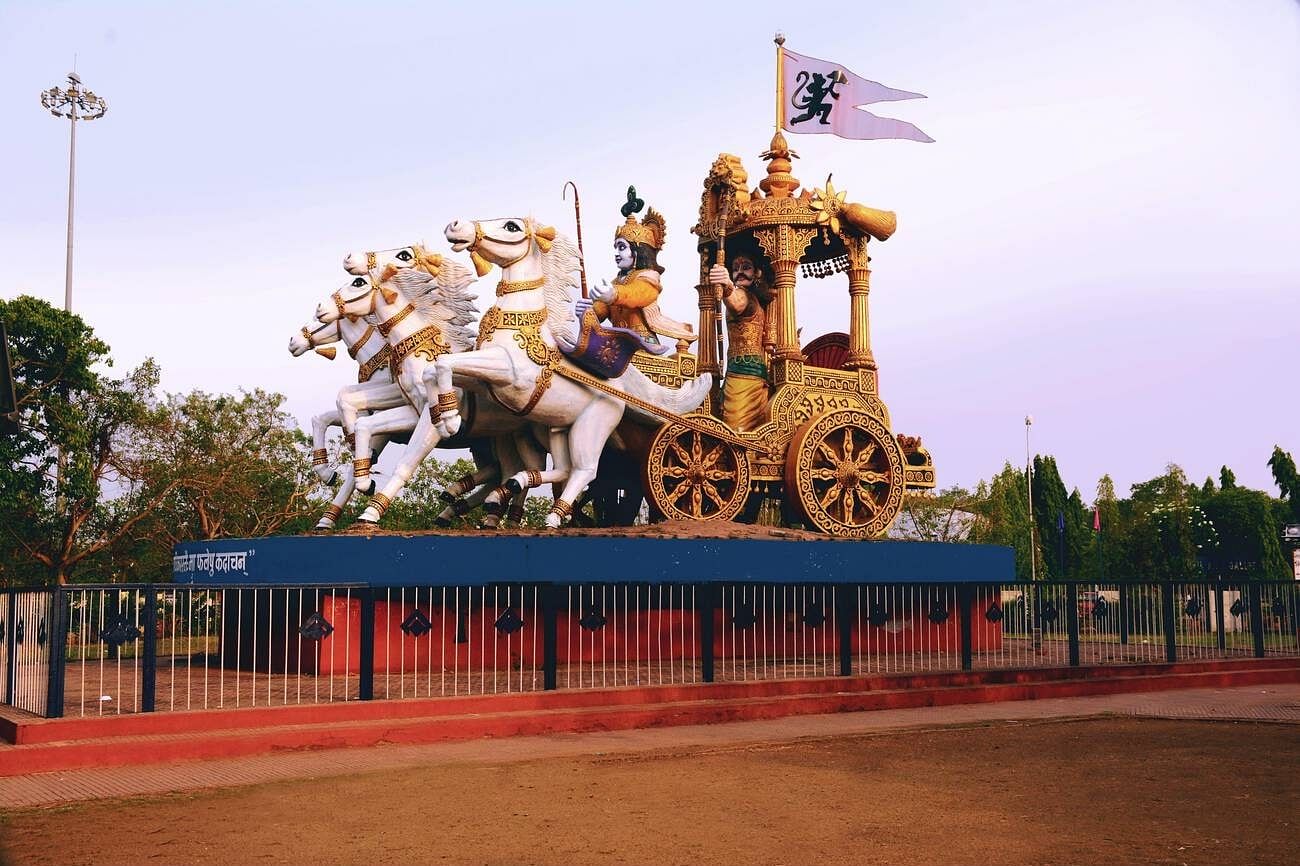
The Civic Center in Bhilai is the central commercial, cultural, and social hub of the city, representing the planned urban development that characterizes this industrial township. This well-designed complex serves as the main shopping, entertainment, and gathering place for Bhilai residents, showcasing how industrial cities can provide quality urban amenities and vibrant public spaces.
The Civic Center features a circular design with radial roads connecting it to different sectors of the city. The complex includes shopping centers, restaurants, cinema halls, banks, and various service establishments. The central area often hosts cultural events, exhibitions, and public gatherings, making it the cultural heart of Bhilai. The architectural design reflects the modernist planning principles that guided Bhilai's development as a model industrial township.
Beyond its commercial functions, the Civic Center serves important social purposes as a meeting place for the community. People from different sectors of Bhilai come here for shopping, entertainment, and social interactions, creating a sense of shared identity among the city's residents. The center's design with pedestrian-friendly spaces and green areas enhances its appeal as a public space.
From an urban planning perspective, the Civic Center represents the thoughtful approach to city building that characterized Bhilai's development. Unlike the haphazard growth seen in many Indian cities, Bhilai was planned with designated areas for different functions, and the Civic Center was designed as the commercial and cultural core that would serve the entire township.
In conclusion, the Civic Center is more than just a commercial complex—it is a symbol of Bhilai's identity as a planned city that prioritizes quality of life alongside industrial development. It represents the vision of creating complete communities where residents have access to all necessary amenities within a well-organized urban environment.
Maitri Bagh, meaning "Garden of Friendship," is a beautiful zoological park and garden in Bhilai that was established as a symbol of the friendship between India and the Soviet Union. This well-maintained park combines a zoo, botanical garden, and recreational space, representing the cultural dimension of the international cooperation that created Bhilai as an industrial city.
The park features a wide variety of animals including tigers, leopards, bears, deer, and numerous species of birds. The zoo is designed with modern enclosures that provide adequate space and environmental enrichment for the animals. The botanical garden section showcases diverse plant species, with beautifully landscaped areas, fountains, and walking paths. The park also has a lake with boating facilities and a musical fountain that adds to its attraction.
Maitri Bagh is not just a recreational space but also an important symbol of the international cooperation that built Bhilai. The park was developed with Soviet assistance alongside the steel plant, reflecting the comprehensive approach to township development that included not just industrial infrastructure but also social and recreational facilities. The name "Maitri Bagh" itself celebrates the friendship between the two nations.
Beyond its symbolic value, Maitri Bagh serves important educational and conservation functions. The zoo participates in breeding programs for endangered species and educational programs for visitors help raise awareness about wildlife conservation. The park provides quality recreational opportunities for Bhilai residents and serves as a popular destination for visitors from nearby areas.
In conclusion, Maitri Bagh is more than just a park—it is a living symbol of international friendship and comprehensive urban planning. It represents the vision of creating industrial cities that offer not just employment but also quality of life through well-designed public spaces that serve educational, recreational, and environmental purposes.
Jawaharlal Nehru Park in Bhilai is a beautifully landscaped recreational park that serves as an important green space for the city's residents. Named after India's first Prime Minister, this park represents the commitment to providing quality public spaces in industrial cities and showcases how urban development can include environmental considerations and recreational amenities.
The park features extensive lawns, flower beds, walking tracks, and children's play areas. The well-maintained gardens provide a peaceful environment for relaxation and recreation. The park also has a musical fountain, seating areas, and spaces for public gatherings. The design incorporates both open spaces for activities and shaded areas for quiet relaxation, catering to different needs of visitors.
Jawaharlal Nehru Park serves important social functions as a venue for family outings, morning walks, and community events. The park hosts cultural programs, especially during festivals and public holidays, bringing the community together. Its central location makes it easily accessible to residents from different parts of the city.
From an environmental perspective, the park contributes to Bhilai's urban ecosystem by providing green space that helps improve air quality and supports urban biodiversity. The trees and plants in the park provide habitat for birds and other urban wildlife, creating a mini-ecosystem within the city.
In conclusion, Jawaharlal Nehru Park is more than just a recreational space—it is an essential component of Bhilai's urban infrastructure that enhances the quality of life for its residents. It represents the understanding that industrial cities need not just factories and houses but also beautiful public spaces where people can relax, socialize, and connect with nature.
Uwasagar Dam is a picturesque reservoir located near Bhilai, serving as an important water source for the city and surrounding areas while also providing recreational opportunities. This dam represents the comprehensive planning that went into Bhilai's development, ensuring not just industrial infrastructure but also essential resources like water supply and recreational amenities for the growing city.
The dam creates a large reservoir that supplies water for industrial, agricultural, and domestic purposes. The reservoir area has been developed as a popular picnic spot and tourist destination, with beautiful views of the water against the backdrop of surrounding hills. The area offers boating facilities, gardens, and viewpoints that make it an attractive destination for nature lovers and photography enthusiasts.
Uwasagar Dam is not just a functional infrastructure project but also an important ecological site. The reservoir supports aquatic life and provides habitat for various bird species. The surrounding areas have been afforested, contributing to local environmental conservation. The dam's role in water management highlights the importance of sustainable resource use in industrial development.
From an engineering perspective, Uwasagar Dam represents the technical capabilities in water resource management that supported Bhilai's growth as an industrial city. The reliable water supply from the dam has been crucial for the operations of the steel plant and the needs of the growing population.
In conclusion, Uwasagar Dam is more than just a water reservoir—it is a multifunctional asset that supports Bhilai's industrial, domestic, and recreational needs. It represents the holistic approach to city building that characterized Bhilai's development, where essential infrastructure, environmental considerations, and quality of life amenities were all integrated into the planning process.
Bhilai is not just a steel city but also a model of planned industrial development, international cooperation, and quality urban living. With its world-class steel plant, well-planned infrastructure, quality amenities, and vibrant community life, Bhilai rightfully earns the title of the "Steel City of Chhattisgarh", making it one of the most important industrial and urban centers in India and a proud representative of Chhattisgarh's industrial capabilities and planned development approach.
Bilaspur, the second-largest city in Chhattisgarh, is often called the "Cultural Capital" of the state due to its rich cultural heritage and historical significance. Located in the central part of Chhattisgarh, this ancient city has been an important cultural and commercial center for centuries. Bilaspur beautifully preserves its traditional character while developing as a modern urban center, making it a fascinating blend of old and new Chhattisgarh.
Bilaspur is much more than just a cultural center — it is the living heart of traditional Chhattisgarhi culture where ancient arts thrive alongside modern life. With its rich heritage, traditional crafts, literary traditions, and authentic cultural practices, Bilaspur stands as a symbol of Chhattisgarh's cultural identity and the preservation of traditional values in a changing world.
Korba, located in northern Chhattisgarh, is known as the "Power Capital of Chhattisgarh" due to its concentration of thermal power plants and its significant role in India's energy sector. This industrial city represents Chhattisgarh's important contribution to the nation's power generation and showcases the state's mineral wealth, particularly its coal reserves that fuel the power plants.
Korba is not just an industrial city but also a symbol of Chhattisgarh's energy capabilities and its crucial role in powering India's growth. With its massive power plants, growing industries, and strategic importance in the energy sector, Korba truly reflects Chhattisgarh's position as an energy-rich state and its contributions to the nation's development, while showcasing how industrial cities can develop while maintaining connections to their regional cultural context.
Jagdalpur, the headquarters of Bastar district, serves as the cultural and administrative center of the Bastar region, often called the "Gateway to Bastar." This historic city is known for its rich tribal culture, ancient temples, and natural beauty. Jagdalpur represents the unique cultural identity of the Bastar region and serves as the base for exploring the tribal heartland of Chhattisgarh.
Jagdalpur stands as a symbol of Bastar's unique cultural identity and natural beauty. From the magnificent Chitrakote Falls to the ancient Danteshwari Temple, and from vibrant tribal markets to the grand Bastar Dussehra, the city reflects the rich cultural heritage and ecological wealth of the Bastar region. Its role as the gateway to one of India's most culturally distinct regions makes Jagdalpur an essential component of Chhattisgarh's cultural and tourism landscape.
The cities of Chhattisgarh reflect the diverse character and multiple dimensions of the state. While Raipur showcases governance and modern development, Bhilai represents industrial excellence and international cooperation, Bilaspur embodies cultural heritage and traditional values, Korba demonstrates energy production and industrial growth, and Jagdalpur highlights tribal culture and natural beauty. Together, these urban centers present a comprehensive picture of Chhattisgarh's journey from ancient civilizations to modern statehood, balancing industrial development with cultural preservation, economic growth with environmental consciousness, and urban advancement with respect for traditional ways of life.
The fashion of Chhattisgarh is a vibrant reflection of its rich tribal heritage, agricultural traditions, and cultural diversity. Clothing in the state represents a beautiful synthesis of indigenous tribal traditions, practical adaptations to the local climate and lifestyle, and contemporary influences. From elaborate traditional costumes worn during festivals to everyday practical wear suited for agricultural work and forest life, Chhattisgarh's clothing scene offers a fascinating glimpse into the state's cultural identity and social evolution, showcasing how tradition and modernity coexist in this central Indian state.
Chhattisgarh's traditional men's attire reflects the state's cultural diversity, with distinct styles for different tribal communities and regions. The clothing varies from simple functional wear for daily activities to more elaborate costumes for festivals and ceremonies. Even in modern times, traditional attire is proudly worn during cultural events, festivals, and important occasions, showcasing Chhattisgarh's rich sartorial heritage and the practical wisdom embedded in traditional clothing designs.

Traditional men's fashion in Chhattisgarh is a vibrant expression of the state's cultural diversity and practical wisdom. From the distinct tribal attire to practical daily wear suited for agricultural life, and from ceremonial costumes to modern adaptations, each element tells the story of Chhattisgarh's complex cultural tapestry and its people's pride in their identity, while demonstrating how traditional clothing has evolved to meet changing needs and contexts while preserving its cultural essence.
The traditional attire of Chhattisgarh's women is a spectacular display of cultural richness, artistic expression, and community identity. From the elaborate costumes of tribal women adorned with traditional jewelry to the practical wear for daily activities and agricultural work, Chhattisgarh's female fashion showcases incredible diversity and craftsmanship. These outfits are worn with pride during festivals, weddings, and cultural ceremonies, representing the state's living cultural heritage and the artistic skills passed down through generations of women.

Traditional women's fashion in Chhattisgarh is a magnificent display of cultural diversity, artistic excellence, and identity pride. From the intricate patterns of tribal attire to the elaborate jewelry, and from traditional hairstyles to symbolic adornments, Chhattisgarh's female fashion continues to reflect the rich heritage and living traditions of the state's diverse communities. It represents not just clothing but a comprehensive system of cultural expression that connects women to their heritage, community, and natural environment, while adapting to contemporary life and changing social contexts in ways that preserve essential cultural values.
Chhattisgarh is renowned for its rich textile heritage, with each community specializing in unique fabrics and weaving techniques. The state's textiles reflect centuries-old craftsmanship, cultural symbolism, and artistic excellence, making them an integral part of Chhattisgarh's identity and pride. From handloom weaving to traditional dyeing techniques, Chhattisgarh's textile tradition is a treasure of indigenous knowledge and skill that has been preserved and adapted through generations, representing both cultural continuity and innovation.
Chhattisgarh's fabrics and textiles are a living heritage of artistic excellence, cultural significance, and sustainable practices. From the intricate handloom weaves to the symbolic patterns, and from traditional dyeing techniques to contemporary adaptations, these textiles not only clothe the people but also tell the story of Chhattisgarh's diverse communities, their relationship with nature, and their cultural pride. They represent the state's rich artistic tradition and its potential for sustainable livelihood generation through craft preservation and innovation, while serving as a vibrant expression of cultural identity in a rapidly changing world.
While Chhattisgarh is deeply rooted in traditional attire, modern fashion has made significant inroads, especially in urban areas like Raipur, Bhilai, and among the younger generation. Today, people creatively blend Western clothing, contemporary Indian styles, and traditional elements to create a unique fashion identity. Chhattisgarh's fashion scene reflects its evolving urban culture, youth aspirations, and global connections while maintaining strong cultural roots, creating a dynamic fashion landscape that honors tradition while embracing change and innovation.
Modern fashion in Chhattisgarh represents a dynamic dialogue between tradition and innovation, preservation and change. While urban youth embrace global trends and new expressions, cultural events and special occasions still honor Chhattisgarh's heritage through traditional wear. This creative combination of old and new makes Chhattisgarh's fashion scene vibrant and evolving, where clothing becomes a medium of cultural expression, personal identity, and social change, reflecting the state's journey from traditional societies to a modern Indian state with a unique cultural identity that embraces both its roots and its future aspirations in equal measure.
Chhattisgarh's fashion is a beautiful reflection of the state's cultural diversity, natural environment, and social evolution. From the intricate traditional costumes of tribal communities to practical daily wear suited to the local climate and agricultural lifestyle, and from handloom textiles to modern fusion wear, the state's clothing heritage continues to evolve while maintaining its unique identity. It not only represents the cultural pride of Chhattisgarh's diverse communities but also demonstrates their ability to adapt and innovate, creating a fashion landscape that honors the past while embracing the future, much like the state itself which balances its rich tribal heritage with modern development and aspirations, creating a unique cultural identity that is distinctly Chhattisgarhi while being part of the larger Indian tapestry.